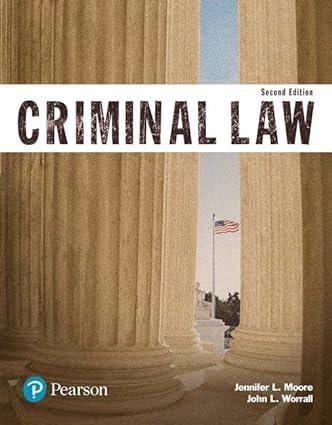Defendant stated that, on the night of December 21, 1973, he, Bush and Geller had been out
Question:
Defendant stated that, on the night of December 21, 1973, he, Bush and Geller had been out drinking. Bush had been staying at Geller’s apartment and, during the course of the evening, Geller several times demanded that Bush pay $100 towards the rent on the apartment. According to defendant, Bush rejected these demands, telling Geller that “you better shut up or you’re going to get a bullet”. . . When Geller again pressed his demand for rent money, Bush drew his .38 caliber pistol, aimed it at Geller and fired three times.
Geller fell to the floor. After the passage of a few minutes, perhaps two, perhaps as much as five, defendant walked over to the fallen Geller, drew his .25 caliber pistol, and fired approximately five shots in the victim’s head and face.
Defendant contended that, by the time he fired the shots, “it looked like Mike Geller was already dead”.
. . . The jury found the defendant guilty of murder. The defendant then moved to set the verdict aside. He submitted an affidavit in which he contended that he “was absolutely, unequivocally and positively certain that Michael Geller was dead before (he) shot him.” . . This motion was denied. Preliminarily, we state our agreement with the Appellate Division that the evidence did not establish, beyond a reasonable doubt, that Geller was alive at the time defendant fired into his body. To sustain a homicide conviction, it must be established, beyond a reasonable doubt, that the defendant caused the death of another person. The People were required to establish that the shots fired by defendant Dlugash were a sufficiently direct cause of Geller’s death. While the defendant admitted firing five shots at the victim approximately two to five minutes after Bush had fired three times, all three medical expert witnesses testified that they could not, with any degree of medical certainty, state whether the victim had been alive at the time the latter shots were fired by the defendant . . . Whatever else it may be, it is not murder to shoot a dead body. Man dies but once.
. . . The most intriguing attempt cases are those where the attempt to commit a crime was unsuccessful due to mistakes of fact or law on the part of the would-be criminal. A general rule developed in most American jurisdictions that legal impossibility is a good defense but factual impossibility is not. Thus, for example, it was held that defendants who shot at a stuffed deer did not attempt to take a deer out of season, even though they believed the dummy to be a live animal. The court stated that there was no criminal attempt because it was no crime to “take” a stuffed deer, and it is no crime to attempt to do that which is legal. State v. Guffey, 262 S.W.2d 152 (Mo.App.). These cases are illustrative of legal impossibility. A further example is Francis Wharton’s classic hypothetical involving Lady Eldon and her French lace.
Lady Eldon, traveling in Europe, purchased a quantity of French lace at a high price, intending to smuggle it into England without payment of the duty. When discovered in a customs search, the lace turned out to be of English origin, of little value and not subject to duty. The traditional view is that Lady Eldon is not liable for an attempt to smuggle.
Questions:
1. Explain the defendant’s argument as to why he should not be criminally responsible for the victim’s death.
2. What type of impossibility is at issue in this case? Explain.
Step by Step Answer:






